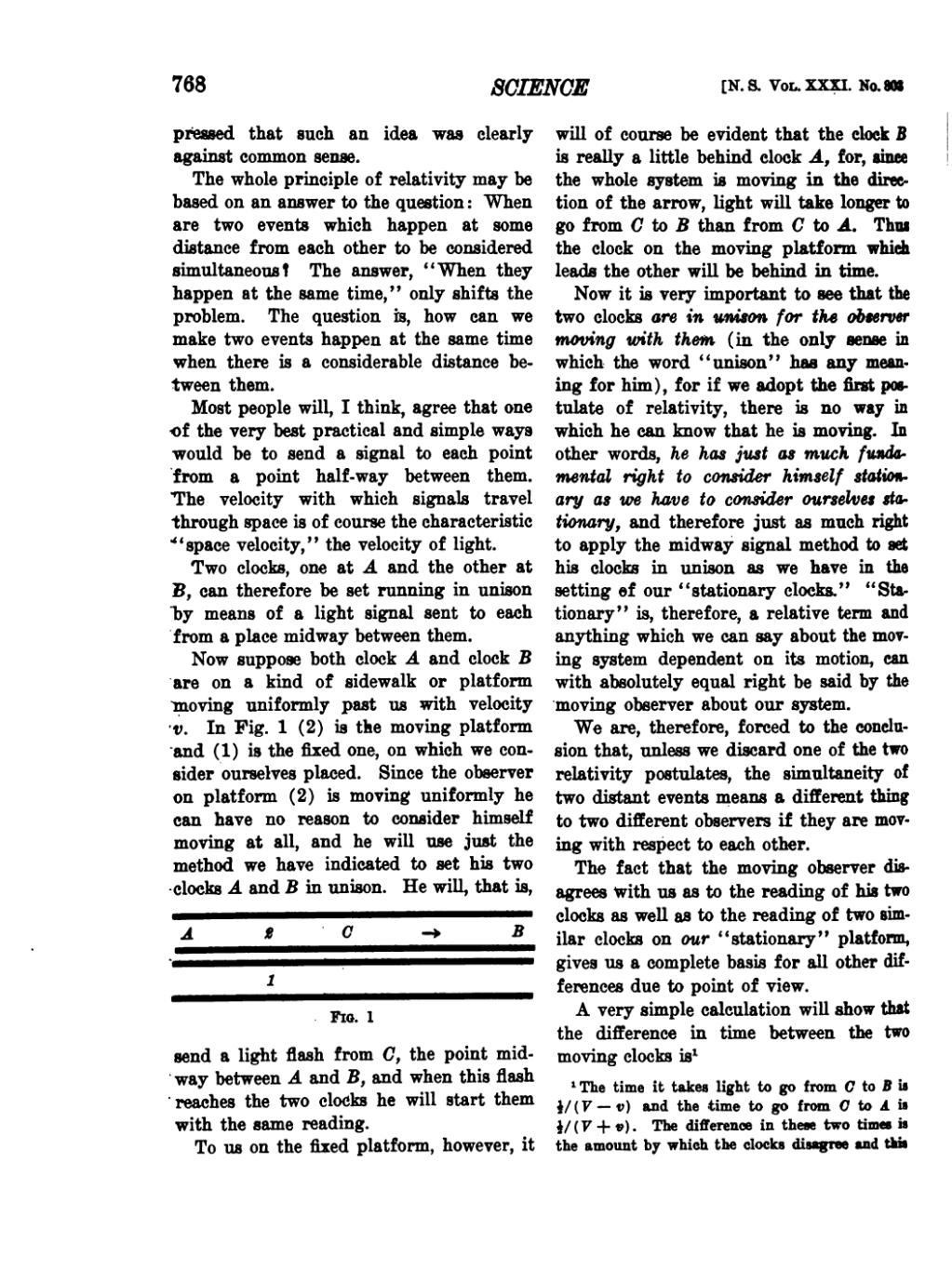pressed that such an idea was clearly against common sense.
The whole principle of relativity may be based on an answer to the question: "When are two events which happen at some distance from each other to be considered simultaneous? The answer, "When they happen at the same time," only shifts the problem. The question is, how can we make two events happen at the same time when there is a considerable distance between them.
Most people will, I think, agree that one of the very best practical and simple ways would be to send a signal to each point from a point half-way between them. The velocity with which signals travel through space is of course the characteristic "space velocity," the velocity of light.
Two clocks, one at A and the other at B, can therefore be set running in unison by means of a light signal sent to each from a place midway between them.
Now suppose both clock A and clock B are on a kind of sidewalk or platform moving uniformly past us with velocity v. In Fig. 1 (2) is the moving platform and (1) is the fixed one, on which we consider ourselves placed. Since the observer on platform (2) is moving uniformly he can have no reason to consider himself moving at all, and he will use just the method we have indicated to set his two clocks A and B in unison. He will, that is,

send a light flash from C, the point midway between A and B, and when this flash reaches the two clocks he will start them with the same reading.
To us on the fixed platform, however, it will of course be evident that the clock B is really a little behind clock A, for, since the whole system is moving in the direction of the arrow, light will take longer to go from C to B than from C to A. Thus the clock on the moving platform which leads the other will be behind in time.
Now it is very important to see that the two clocks are in unison for the observer moving with them (in the only sense in which the word "unison" has any meaning for him), for if we adopt the first postulate of relativity, there is no way in which he can know that he is moving. In other words, he has just as much fundamental right to consider himself stationary as we have to consider ourselves stationary, and therefore just as much right to apply the midway signal method to set his clocks in unison as we have in the setting of our "stationary clocks." "Stationary" is, therefore, a relative term and anything which we can say about the moving system dependent on its motion, can with absolutely equal right be said by the moving observer about our system.
We are, therefore, forced to the conclusion that, unless we discard one of the two relativity postulates, the simultaneity of two distant events means a different thing to two different observers if they are moving with respect to each other.
The fact that the moving observer disagrees with us as to the reading of his two clocks as well as to the reading of two similar clocks on our "stationary" platform, gives us a complete basis for all other differences due to point of view.
A very simple calculation will show that the difference in time between the two moving clocks is[1]
- ↑ The time it takes light to go from C to B is ½/(V—v) and the time to go from C to A is ½/(V+v). The difference in these two times is the amount by which the clocks disagree and this differences become, on simplification, the expression given above.
